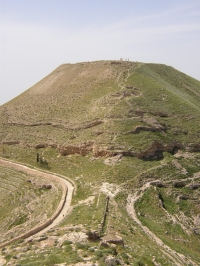
View to the fortress
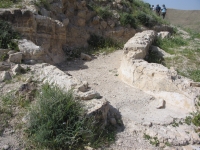
To the cisterns
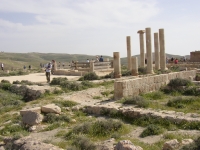
Remains on the hilltop
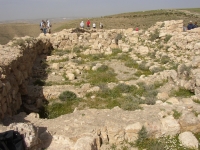
Water reservoir
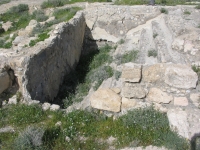
A mikvah
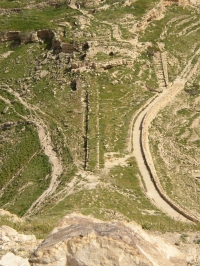
Foundations of the wall
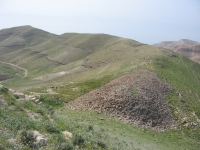
Siege ramp
| For the photo's, see below |
| Home / the complete website |
| Name | Location | Built in the time of |
| Alexandrion | West bank | Hasmonean rulers rebuilt by Herod |
| Dok | West bank | Hasmonean rulers |
| Kypros | West bank | Herod based on Hasmonean remains |
| Hyrcania | West bank | Hasmonean rulers |
| Herodeion | West bank | Herod the Great |
| Masada | Israel | Hasmonean rulers rebuilt by Herod |
| Machaerus | Jordan | Hasmonean rulers rebuilt by Herod |
| Item | Info |
|---|---|
| Length | unknown |
| Cross-section | unknown |
| Volume | unknown |
| Fall | unknown |
| Period | 2 c BC |
| Features |
|
| Recommended literature : | G. Garbrecht and Y. Peleg: The Water Supply of the Desert Fortresses in the Jordan Valley (in: The Biblical Archaeologist vol 57-3 (1994) pag 161 ff) |
| Recommended website : | FAI |
| How to visit : | On Kings Highway 13 km S of Madaba in the village Libb turn to the West; after 10 km you will pass the village Atruz and after 21 km you enter the village Mukawir. The 700 m high hilltop Machaerus is west of Mukawir (N 31.34.026 and E 35.37.262) |
| HOME | More literature on more aqueducts | Last modified: June, 2007 - (webmaster) |

View to the fortress |

To the cisterns |

Remains on the hilltop |

Water reservoir |

A mikvah |

Foundations of the wall |

Siege ramp |